As much as you may think you know what you are doing, guessing your partner’s finger size is one of the hardest things to do. I personally never recommend a size for clients looking to surprise their partner. It is simply too difficult for anyone other than the wearer to determine the right size. You only need to be out by a fraction of a size and the whole ring needs to be resized again. An increase of one size usually equates to 1 mm in the circumference of the circle – which, if you are not familiar, is about the thickness of a credit card. If you do choose to try to pick the ring size without your partner, my general rule is to go for a standard size – for women, this is in the range of L to M. (In Australia, as well as Ireland and the UK, ring sizes are specified using an alphabetical scale.)
The ideal tactic, however, is to take your partner in for a fitting prior to the proposal. At the fitting, your partner can keep in mind the following tips to help you pick the perfect size:
Try to make sure your partner’s fingers are a comfortable room temperature. When our hands are hot, they can generally swell up, and can be as much as a ring-size larger. Likewise, when we are cold, our fingers shrink, which usually explains why a lot of people lose their rings around water activities when the water is cold. Making sure your partner’s hands aren’t too hot or too cold will help ensure the ring size is correct. (The best way to see how hot or cold your partner’s hands are to feel their fingertips.)
Work out whether your partner’s finger changes in size from one season to the other. Some people’s hands can change as much as a full size from summer to winter. One way to find out if your partner’s hand fluctuates with the seasons is to look at the rings, they may be wearing on one of their other fingers. One of their other rings feeling tighter than normal at the time of sizing is agood indication that their hands may be at the upper end of their sizing spectrum at that time.
If your partner’s hands do change significantly when they are hot or cold, try to choose a size that is in the middle. The aim here is to avoid a ring that will be uncomfortably tight in summer and one that is falling off in winter. If having the ring too loose is a worry, you may need to consider changing the shape of the ring – covered in this section.
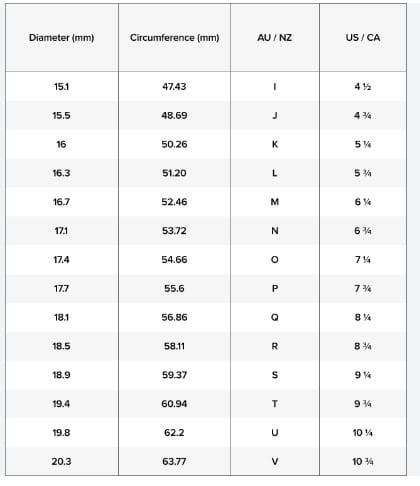
When sizing a hand, you want to see the ring grip the finger a little. But the ring shouldn’t be so tight that it looks like a napkin ring squeezing the napkin and making it bunch up. This can really detract from the aesthetics of the ring. The second thing is that when you turn the ring, it should grip the finger slightly and then release. The ring gripping the finger and not releasing is a good sign that the ring is too tight. Likewise, if the ring spins without grabbing the finger at all, it is too loose. When trying to work out the perfect size, it is usually a good idea to go past the size you think you are, and then go back one (just to rule the incorrect size out).
Wide rings take up a lot more surface area on the finger and, there- fore, will generally feel about half to one size tighter than a standard ring. A standard ring is usually around 3mm wide. The store your partner is having their finger sized in should have a separate set of sizing rings for rings 5mm and wider. If choosing a wider ring design, this set should be used to ensure the ring size is correct.
Thin rings are usually around 2mm in width and will feel about half to one size looser. Getting the size wrong for a thin ring will mean it will tend to flop and spin around more – which is likely to be extremely annoying to your partner. This means you may need to have the ring a little tighter if the band is super fine.
This is one of the hardest hands to size, because the ring needs to be big enough to get over the knuckle, but not so big that it will flop around when it is on. The best thing you can do here is to make sure the ring is as tight as possible when it is going on over the knuckle. If this doesn’t solve the way it sits, you may need to consider having the ring shaped or choosing a hinged ring.
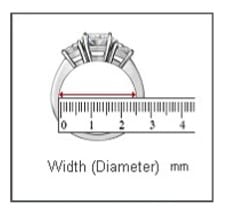
This is a technique for special cases where the resizing of the ring hasn’t helped the way it sits on your partner’s finger. Changing the shape of the ring involves flaring out the bottom corners of the ring. This will make the inside shape of the ring look like a triangle, with the flat part being on the bottom of the finger. The flat bottom then helps keep the ring upright. But don’t worry, the shape will hardly be noticeable from the top, but it will certainly make a difference to the way the ring feels and looks.
Rings with inside comfort fittings need a special set of sizing rings. While the comfort fit feels more comfortable, taking the inside edge of the ring out means there is less surface area to grip the finger. Depending on the width of the ring, the comfort fit can make the ring feel half a size looser compared to a flat bottom ring, so you will want to choose a size that is a little tighter.
The trick to sizing rings with a hollowed-out head is to go more on feel than the actual size. When you put on a ring with a hollowed out top, the top part of your knuckle fills the void, making it feel bigger than you imagine. The best way to pick the correct size is to choose the ring size on the normal ring sizing set that feels the most comfortable. The jeweller should then take that sizing ring into the workshop when they are ready to start the resize, cutting out only as
much as needed to create the same feel on the finger as the sizing ring that your partner tried on.
If some of the preceding options haven’t worked, or your partner has injured their finger badly in an accident, a hinged ring may be your only other option. Much like a hinged bangle, the ring needs to be crafted with a hinge that allows it to open and close. For a hinged ring, the hinge allows the ring to open only as much as needed to get over the knuckle. The hinge can then be closed and locked in. Crafting the hinged mechanism is incredibly difficult and time-consuming, so this is usually a last resort if all other options have failed.
Tips for taking off a ring.
A chiropractor once told me that before an adjustment I should wiggle my toes. The effect of this actually has nothing to do with your feet – it just forces you to take your mind off what is happening to another part of your body. I often see the same kind of distraction tactics with clients when they are trying to take off a ring that is a little too tight. It is often quite funny to watch – it almost appears as if they are trying to pull their whole knuckle off. Twisting and turning, holding their tongue to one side and jumping on one foot are all common techniques I have seen – and all of these will prob- ably hurt your finger more than help you remove your ring.
The first simple thing to do is relax. By relaxing you allow all the tendons and muscles in your finger to go down. The second step is to bend your finger slightly. This helps remove all the excess skin from the top of your knuckle, which tends to bunch up when you straighten your finger. The third step is to push up from the bottom of the ring with your thumb. Then, using your index finger on the top of the ring, gently rock it over your knuckle as you are pushing up with your thumb.
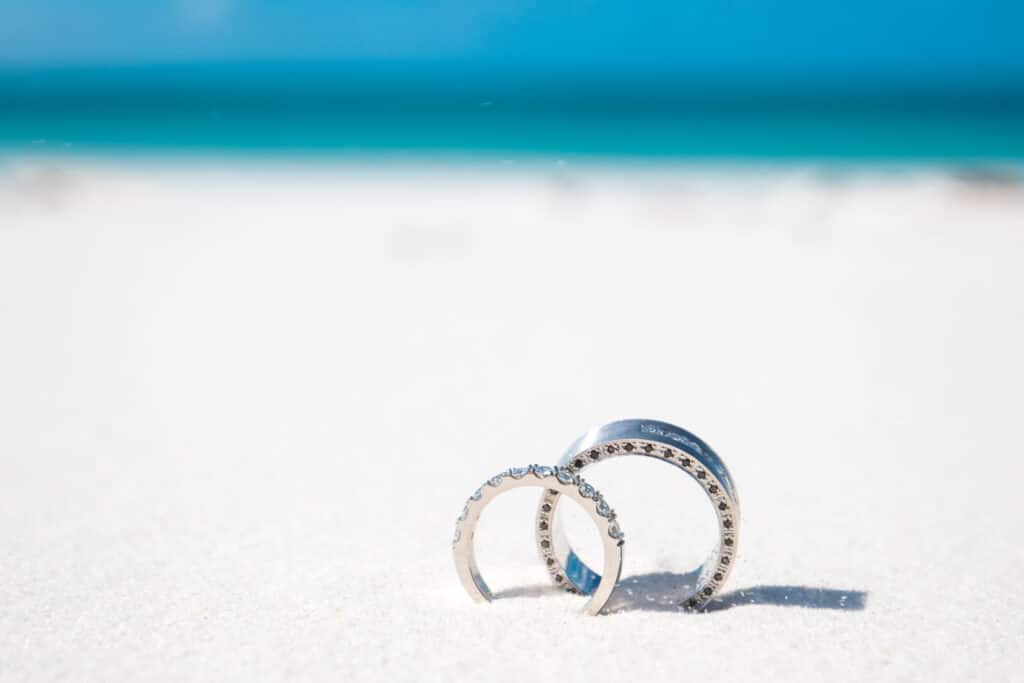
The ring only needs to be out a fraction of a size for it to have to be resized, but almost any ring can be sized up or down three sizes. So, although the chances of you getting the size spot-on without your partner are pretty slim, getting it more than three sizes out is even more unusual. My advice is to go for an average size – between L and M for women. If their hands and fingers are particularly small, maybe go down one size to K. Likewise, if you are worried that your partner won’t be able to get the ring on during the proposal, you might want to go a little bigger to be on the safe side. From a jeweller’s perspective, going down a few sizes is a little easier than going up.
If you have spoken about getting married, but still want to maintain as much surprise as possible, have your partner go to a local jewellery store to have their finger sized. Again, depending on when you plan on proposing, try to do this as early as possible, and give away as few details as possible, so as to maintain some element of surprise.
The only ring that will be helpful in determining the engagement ring finger size would be a ring that your partner wears on the ring finger on the other hand. (If you’re still unclear, this is the finger next to the pinkie finger on the right hand.) Never use a ring that your partner wears on their two main pointer fingers, because the size of these have no correlation to the ring finger on their left hand. For most people, the two ring fingers will only be about half a size different. If she is right-handed, the right hand is usually a half size bigger, so make sure you take off half a size. If the only ring you can find is a ring that she wears on one of the two middle fingers, just stick with the standard finger size option (between L and M for women).
You can contact the team via email here and we can arrange a complimentry ring sizer to be delivered to your home or workplace. You can also call the showroom on 07 32106288 or make an appointment to chat with one of our experts here.
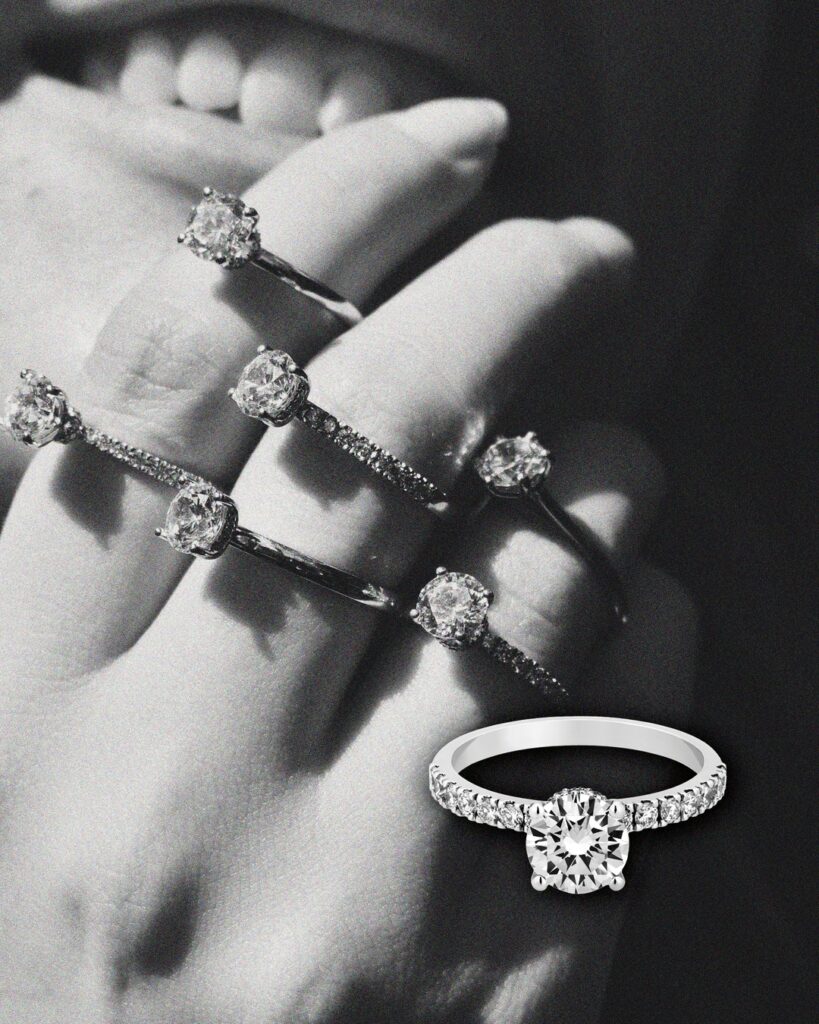
Buying a moissanite ring has emerged as an option for lots of couples. The question is, should you? When it comes to diamonds, a diamond is a diamond, (whether it is a mined diamond or a created diamond) anything else is a simulant. Which means it is like but not the same thing. Stones like a white sapphire, Cubic Zirconia (CZ) or moissanite are all similar looking to a diamond, but as I go into in this article are quite different.
Whether a moissanite or another simulant is right for you will come done to many factors. For some price is considerable factor, however there are others that genuinely like the look of a moissanite.
What is Moissanite?
Moissanite was first discovered in 1893 by a French scientist named Henri Moissan, who later won the Nobel Prize in Chemistry. He discovered the gemstone in a crater created by a meteorite that fell to Earth. He initially thought that he had discovered diamonds, but later determined that the crystals were composed of silicon carbide, which is different to diamonds that are made of carbon.
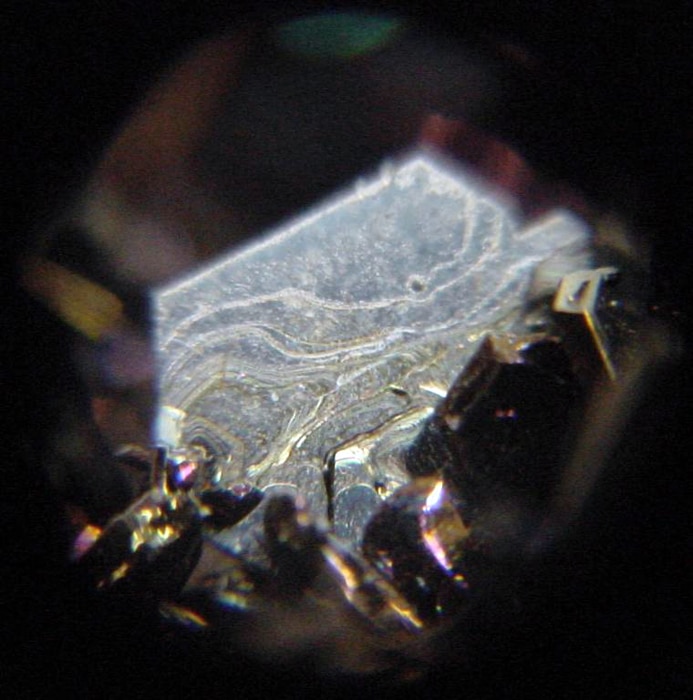
Are all Moissanite natural?
Natural moissanite is incredibly rare. The moissanite found in jewellery today is laboratory-created or referred to as synthetic moissanite. Moissanite is created to give the illusion of similarity to diamonds. However visually it is quite different from a real diamond. Most notably the durability, brilliance, and colour of the two gems are quite different.
Brilliance and Fire
We refer to the amount of white light coming out of a diamond as brilliance whereas fire or dispersion is seen as the blues, reds and yellows coming out of the gemstone. Interestingly moissanite shows both, but typically has more fire or dispersion than diamond. The visual effect of this is more rainbow flashes of light (or disco ball type look) than diamond. While some people find this appealing, the downside is that it can sometimes make the stone look artificial or unnatural.
Colour
Traditionally moissanites were identifiable by a characteristic yellow/greenish tinge, which are made significantly more visible when heated with a flame. Colours that were comparable to a J – M colour of diamonds. However today they come in a range of colours that are comparable to D-F or G – I colour of diamonds. Still, moissanite can change colour based on lighting and may not always look perfectly colourless.
Still, moissanite has been known to change colour based on lighting and may not always look perfectly colourless.
Clarity
Just like with diamonds, moissanite is graded for clarity. While they are created in laboratories, moissanites still have inclusions that are often visible with a magnification lens. Moissanites are graded on a similar scale to the one used by the GIA for grading diamonds.
However, it is important to note, that most moissanites will only come with a certificate issued by the manufacturer not an independent diamond grading laboratory like the GIA.
Since moissanites are artificial, unlike natural diamonds, it is very uncommon to see moissanites with a clarity grade below the VS level for sale.
Is a diamond more durable than moissanite?
Hardness
At the end of the day there is no stone that is as hard as a diamond. A diamond is a ten on the Mohs scale, diamond is well-known as the hardest material. Nothing but a diamond can scratch another diamond. While Moissanite has a hardness of 9.25 and is the second-hardest material used a gemstone, but it is destructible. Having a hard stone helps to ensure that the daily accidental bumps and scrapes that you hardly even notice, do not gouge, and scar the surface of your beautiful ring
Budget and Size for Moissanite vs. Diamond
The one big benefit of a moissanite ring is the cost. Which can play a significant factor when choosing an engagement ring for some couples. When comparing moissanite ring vs diamond ring, moissanite has a clear advantage in this aspect.
How much does a 1ct Moissanite cost?
Typically, a 1ct equivalent size moissanite stone will be under the $1000, depending on the colour, clarity, and manufacturer.
Disadvantages of Moissanite
Value – While diamonds do not meet any of the characteristics of an asset, other than an investment in your happiness, they still have a base value that is retained over the long term. Whereas there is no retained value in a moissanite.
Not a traditional diamond – diamonds have long been associated with engagement proposals. If you are considering using a moissanite in an engagement ring, it would be an innovative idea to have that discussion with your partner prior to proposing, to see if this is something important to them.
How to tell if your stone is a moissanite?
Doubling View of the facets in Moissanite. Unlike many other types of diamond simulant, moissanite displays an optical effect called double refraction. This means that when a light ray enters the gemstone, it is slowed down, bent, and split into two light rays. Which is different to a diamond which is singularly refractive.
The best way to observe this effect is to view the gemstone at an angle from the crown (bezel) facet. By bringing a ten times loupe and focusing on the culet through the bezel facet, you can check the gemstone for a “doubling facets” effect.
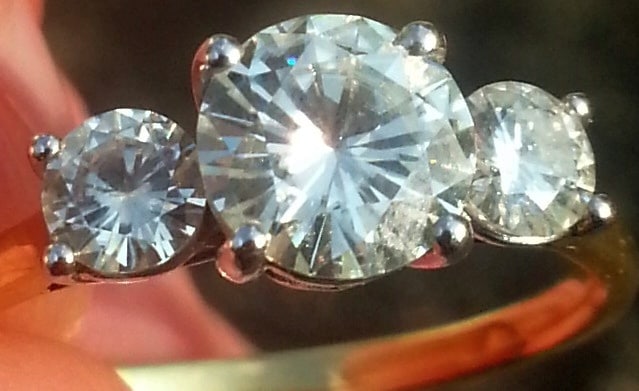
Will Moissanite show up on a diamond tester as a diamond?
No, most conventional diamond testers today will differentiate between a moissanite and a diamond. Most reputable jewellers will have one of these testers.
Whether or not a moissanite ring is the right stone for you will depend on your personal circumstances, and what is right for both of you. Sometimes a moissanite can be a great alternative for right now, and one that can be upgraded at some point in the future. At Xennox Diamonds we can make any of our engagement rings with a moissanite stone. We look forward to seeing you in our showroom for one of our design consultations, which you can book here.
Thinking about lab grown diamonds? This post will give you the most comprehensive deep dive into laboratory grown diamonds, giving you more knowledge than 90% of the sales people out there and making sure you are getting the best quality diamond.
Having been in the diamond industry for over 25 years, working as a diamond grader, gemmologist and valuer and owner of a diamond boutique, I can honestly say I really love diamonds. I am often asked questions about jewellery and gems, asking me to pick my favourite cut, colour, or stone and at the end of the day, I keep coming back to a diamond.
The questions I get asked more than most right now are all about lab grown diamonds; what exactly are they? Are they all created the same? Can you tell the difference, and most importantly should I consider buying one?
For me, whether it is a lab grown diamond or a mined diamond, I love both and either can be perfect for you depending on what you are looking for in your diamond. My wife wears both mined and lab grown diamonds and the origin for the stone has not been a contributing factor for me, but I understand for some it may be.
I am a big believer in arming yourself with all the correct information before deciding between lab grown diamond and mined diamonds and where to buy from. With the size of the diamond industry combined with the extensive amount of information on the internet, you might be finding it difficult to decipher what is correct and what is misinformation on created diamonds without the marketing agenda and spin.
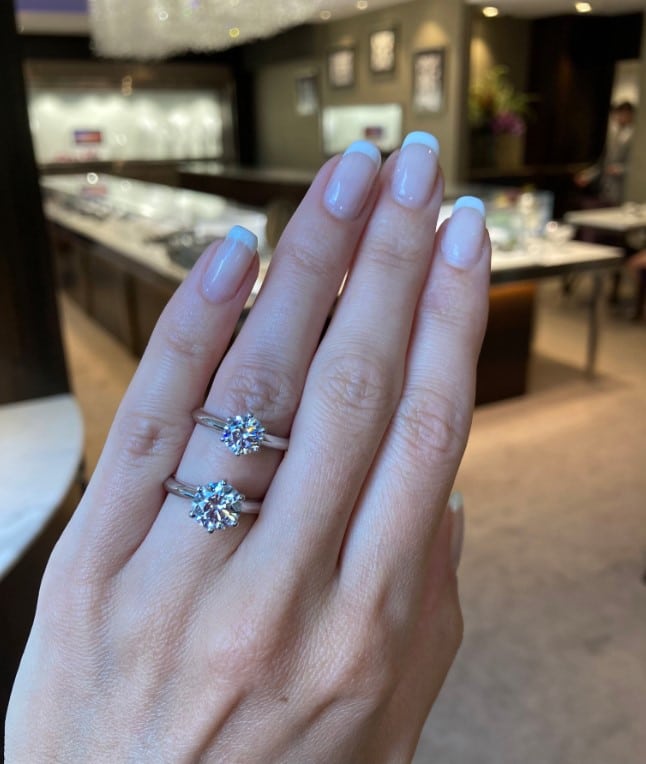
The first time I came across a lab grown diamond, I must confess I was quite sceptical. One of my suppliers had sent me an amazing two-carat diamond to look at. As I normally do, I checked the diamond for myself so I could grade it based on my own valuation. I looked at the colour, clarity, and the precision of the cutting, and was soon satisfied that I was indeed looking at an amazing diamond – one that would make someone incredibly happy to wear for the next 50 years. I then looked at the paperwork, and the first thing that struck me was the price. It was significantly less than what I was expecting considering the quality of the stone. I quickly rang the supplier to see if the pricing was a mistake and discovered it wasn’t. It was just the mining cost making the significant price difference.
Can an expert tell the difference? Can you?
I recently put myself to the test, to check whether I could tell the difference between a lab grown diamond and a mined diamond. I sat down, a little cocky, as the gentleman across the table from me presented 10 stones. I simply had to sort these into lab grown diamonds and mined diamonds.
I started as I always do, picking up my loop and tweezers, as familiar to me as a pair of shoes that fit perfectly. Picking up the first diamond, I noticed a dark black inclusion on the edge of the stone. This looked like a familiar graphite inclusion that I had seen 1000 times of more. Easy first one, I thought. This obviously belongs in the mined diamond group. The second diamond I picked up was completely clean, so I placed the stone back on the table, gave it a wipe with the special microfibre diamond cloth, rotated the stone and picked it up again. (A widespread practice when assessing diamonds is to rotate the stone to make sure the orientation of the inclusion isn’t hiding due to the angles of light bouncing around inside the stone.) Still nothing? Well, this must be either an incredibly clean diamond, or it must be a lab growndiamond, I thought. So, it went in the created diamond category.
Over and over, I went through this exercise until all ten stones were sorted. Announcing I was finished to my counterpart across the table with a little smile on my face, he asked me if I was sure and happy with my selection. To which my confidence slipped a little and I nervously replied, ‘Well, let me just have one quicker look.’ Having satisfied my curiosity, I decided I was happy with my selection. ‘How did I do?’ I (still somewhat nervously) asked him.
The gentleman now seemed to know something he was reluctant to share. ‘Well, the thing is,’ he said somewhat apprehensively, ‘they are all lab grown diamonds.’
What? How is this possible? I thought.
Realising that the game was up, I decided to have a look at all the diamonds I had marked as mined, scrutinising them from every angle. I had to conclude that, without sophisticate laboratory equipment, there really was no way to tell the difference between lab grown diamonds and mined diamonds, even with a 10x times magnifying lens.
At first, I wasn’t sure whether I should be happy or upset that I couldn’t tell the difference; however, what I ended up taking from the experience was that my original prejudices around the origin of creation had absolutely nothing to do with how the diamond presented and performed.
Are created diamonds better?
How could something that is created in a lab be better than something produced ‘naturally’? Well, lab grown diamonds being as good as, or better, than mined diamonds may not be as far-fetched as you think. After all, advancements in technology are happening every year, and things were previously thought impossible are now normal. We are talking about travelling to Mars and 3D printing meat, just to name but a few such innovations. So why not creating high-quality diamonds?
Aren’t all diamonds created?
When you really think about it, all diamonds are created. Some are just created by the earth, and some are created by humans. The process used to make diamonds today is essentially replicating the conditions that occurred below the ground over millions of years.
Mined diamonds are a billion years old, whereas a lab grown diamond can be anywhere from one to three months old, depending on the size and quality of the stone.
Apart from the time factor, the only real difference is that one diamond is made below the ground and the other is made above the ground. Essentially, only the origin is different for each.
Natural versus synthetic
Interestingly, in 2020 the US Federal Trade Commission (FTC) removed the word ‘natural’ when talking about a mined diamond. They argued it was impossible to have a synthetic element. We are either breathing oxygen right now or we aren’t, for example. The same goes with the carbon in a diamond – it is either carbon or it isn’t. A synthetic carbon simply doesn’t exist.
The other interesting point here is that most people can tell from a considerable distance that other gemstones are the created versions – for example, synthetic sapphires look like blue glass. There is something quite distinctive about most created gemstones, and they just look fake or unnatural – and so are significantly cheaper. A lab grown diamond, on the other hand, is indistinguishable from a mined diamond.
Simulate versus created
As opposed to a lab grown diamond, a simulate is something that is like but not the same thing. In terms of diamond simulates, this refers to stones such as a cubic zirconia (CZ). At a distant glance, they might look the same as a diamond, but they don’t have the same optical or hardness properties.
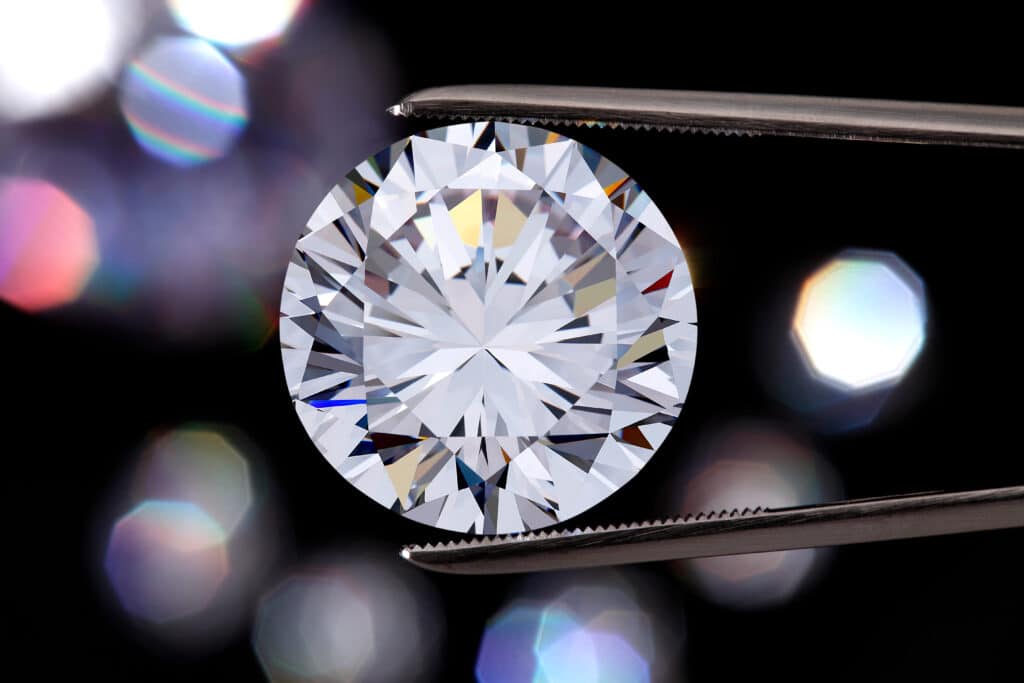
What about the negatives?
As I’ve discussed, lab grown diamonds can be of such high quality it’s almost impossible to separate them from mined diamonds. And you can buy this high quality at a fraction of the price of mined diamonds. So, you might be reading this and thinking that this sounds like the best thing since sliced bread. A bigger and better-quality diamond, for less? What’s the catch?
The main possible negatives relate to resale value for the diamond and whether it will hold its value.
Resale value
The truth is every diamond in the world is graded and valued for exactly what it is. If you pay $5000 less for a lab grown diamond now, for example, then it will be consistently worth at least $5000 less than the value of a comparable mined diamond.
Holding its value over time
I am not sure about you, but my crystal ball is on the fritz now, and I think anyone who tells you they know what the future holds should be treated with caution. What I do know is that all diamonds – mined and lab grown – move up and down in price. Many contributing factors influence the price of diamonds globally. When I recently checked the wholesale price of the diamond I purchased for my wife’s engagement ring, it had fallen $3000. (Of course, as I have mentioned, this is totally irrelevant to me, because I don’t plan on selling it.)
While it might be true that products often get cheaper as technology advances, prices are still governed by the age-old forces of supply and demand. Late in 2020, for example, we did see a drop in the prices of laboratory-created diamonds. However, 2021 has seen not only a stabilising of the market rates of created diamonds, but also signs of an increase in rates as demand outstrips supply.
These shortages are being exasperated further by delays in more reactors being built, which is placing further pressures on supply.
Looking at the diverse types of lab grown diamonds
Before I get any further into the features, benefits, pros, and cons of created, understanding the two distinct types of created diamonds currently on the market is important. Check out this video that shows the two growing procesess
High pressure and high temperature lab grown diamonds
HPHT, or high pressure and high temperature, lab grown diamonds, were first invented in 1954 by General Electric and were predominately used for industrial purposes.
In this process, the diamond is created from a ‘carbon seed,’ with typically a material such as graphite being used. Here they are essentially extracting the carbon from a solvent metal, under the required conditions of pressure (over 1.5 million pounds) and high heat (over 1400 °C) to grow the diamond. However, it wasn’t until the 1970s that gem-quality diamonds started to be produced.
While HPHT diamonds are created using several different processes, many of these diamonds exhibit yellowish and brownish tints due to their exposure to nitrogen when being formed. They can also contain metal-type inclusions such as iron, nickel, and cobalt. These types of inclusions area-typical in mined diamonds, and so are often something that allows experts to identify them as lab grown.
HPHT is also used as a post-growth treatment to turn diamonds that have a brownish or yellowish tint into ones in the colourless range of diamonds (that is, in the D to F range; refer to chapter 7). While the colour change produced post-growth using HPHT is permanent, it is important to be aware if the treatment has been used.
One distinguishing feature of HPHT grown diamonds is that they will often have fluorescence, and may not show up on a diamond tester as a diamond in all cases
The time frame for making a HPHT diamond is around one to two months.
Chemical vapour deposition
CVD, or chemical vapour deposition, created diamonds are different from HPHT diamonds in that the seed is an actual diamond, and the diamond is grown from a hydrocarbon gas mixture. This process is a more recent method for creating diamonds and has been used since the 1980s.
Considerably less heat (800 °C) is used, along with myriad other techniques to cause the carbon-rich gas to bond with the diamond seed crystal to allow it to grow.
The diamonds created during the CVD growth method are near colourless, attributed to the vacuum chamber in which they are created. This chamber limits the exposure to nitrogen and boron. When combined with what’s known as a Type 1a, or type 2a, diamond seed, this leads to a whiter finished diamond. (Type 1a diamonds are purely, or almost purely, carbon, and are the purest and most valuable of all – see the section ‘Under the microscope’ for more.) This means that the original creators found the most perfect diamond they could in nature and used this for the seed crystal, from which all the subsequent diamonds were created.
Another advantage of a CVD created diamond is that it will never show fluorescence – refer to chapter 7 for more on how diamonds with low or no fluorescence are graded.
In this process, the diamond seed is placed in the reactor and, over a period of one to three months, grows into the finished laboratory-grown diamond.
Checking the certificate
When buying a lab grown diamond, you need to check the comments section on the certificate to confirm the method used. Was it through HPHT or CVD? If created through CVD, does it specify that a Type IIa diamond was used?
Value of created diamonds
Creating diamonds is not like making a loaf of bread, where you put your ingredients into the mix and, if you follow the recipe, it comes out perfect every time. Creating diamonds has so many variables – relating to the required heat, pressure, time frames and growth rates – that it must be like controlling a spaceship and flying into space with Elon Musk. This variability leads to high fail rates, making the yield of the growth process incredibly unpredictable. Most created diamonds sit in the lower I to K range for colour and SI (G-K VVS-SI1) to I range for clarity (refer to chapter 7). This means that a created diamond in the D to F range for colour and in the VS range for clarity represents a small percentage of all diamonds that are created. If you’re sourcing such a diamond, you’re looking for something rare and hard to find (and so more valuable).
This, along with the millions of dollars already spent in R&D, means that the value of a created diamond falling as low as $1 is incredibly unlikely.
Under the microscope
Diamonds are almost entirely made of carbon. The type Ia diamond, for example, is made up of over 98 per cent carbon, along with trace elements of nitrogen and other minor impurities in them. The type IIa diamond is almost exclusively made up of just carbon. (These make up just 1 to 2 per cent of all mined diamonds.)
To get a better idea of the effect of trace elements on light performance, imagine you are looking through your car windscreen after having been driving for a couple of months. On the windscreen might be the general grime of pollution, putting a fine film on the surface, along the occasion bug that has hit your window and other nasties that have found their way on to your screen. All of this impairs the clean transparency of your vision. Now imagine your windscreen has been cleaned with a premium grade solution that has made it so clear you find it hard to tell there is a glass barrier there at all.
At a microscopic level, this is like the difference between the type Ia and type IIa diamond. While the difference may seem small, it makes a significant impact on your diamond’s appearance and value. The type IIa diamond just has a certain crispness to it, and this type is possible with created diamonds.
Interesting fact for the chemistry buffs on trivia night
Carbon has four covalent bonds and nitrogen only has three. As mentioned, a type Ia diamond has carbon and nitrogen. Having nitrogen in the diamond’s crystalline lattice structure means it absorbs blue light, which leaves yellow light being emitted. Therefore, the more nitrogen a diamond has, the more yellow it looks.
The type IIa diamond, on the other hand has almost no nitrogen, which leaves it facing up whiter.
Considering the Sarine Light Performance report
Along with the ‘four Cs’ of cut, colour, clarity, and carat weight (refer to chapter 7) a new measure of a diamond’s performance rates how it interacts with light – using the Sarine Light Performance rating. The highest light report ranking you can get using this system is an Ultimate3. With practice and skill, it is possible to select a stone that has the right proportions, cut, clarity and colour to achieve this ranking. However, it has been my experience that it is almost impossible for a mined diamond to reach this classification due to the quality of the crystal and the way the light travels through the crystal.
Achieving an Ultimate cut grade (which is higher than the standard GIA excellent cut – refer to chapter 7) means that you diamond will sparkle more, even when dirty. Diamonds in the Ultimate range are simply beautiful and hard to source, which makes them even more desirable. Laboratory created diamonds are more likely to achieve the Ultimate 3 ranking than mined diamonds.
Mined versus created – or taxi versus Uber
One of the things clients often say to me is that they prefer a mined diamond because they believe it to be ‘traditional’ – to which I usually ask them if they use an Uber or a taxi. Almost everyone says they use an Uber, and I then ask, ‘Why isn’t a taxi ‘traditional’?’
The funny thing about technology is that it is often first seen with sceptical eyes, before being slowly adopted, and finally accepted and seen as common place. Even something such as buying online and having your shopping delivered used to be viewed with apprehension – putting your credit card information and address into the website? What if someone fraudulently purchased something on your card? Now no-one gives it a second thought.
Are lab grown diamonds a young person diamond?
As a rule, I find the client age line for choosing a created diamond is around 45 years. While it might be said that younger people embrace technology faster than the more seasoned of us, it isn’t always the case.
I had a couple recently celebrating their 43-year wedding anniversary with a 4.6ct E VS1 round brilliant, created diamond. If they had wanted to go for a mined equivalent, they would have had to pay more than $120,000 extra.
Spend more, save more
While ‘spend more to save more’ might be a funny catchphrase aimed at getting you to spend more at the Christmas and Boxing Day sales, it really is true when it comes to diamonds. The bigger the created diamond that you choose, the more you save. At the time of writing, the average saving when purchasing a one-carat created diamond was $5000, while you could save $12,000 if purchasing a 1.5ct created diamond, and $25,000 on a two-carat one.
The conversation I often have with my clients is around what they could do with the extra money. For a lot of them, the money saved can go towards a house deposit, paying for the wedding or even a house renovation.
Clients often decide to either save the money they would have otherwise had to spend for a comparable mined diamond, or they keep their budget the same and increase the size and quality of the diamond they can afford to buy. Depending on the quality of the diamond you are looking at, for example, you can likely get around a 40 to 50 per cent bigger diamond for the same money. So, if you’re looking at a one-carat mined diamond, in a created diamond you would be looking at 1.5ct-plus size diamond, which is certainly a noticeable difference.
The other bonus factor you usually find in a created diamond is that the cost of upgrading your quality is substantially less. For example, upgrading to a diamond in the VS range for clarity from one in the SI range might cost $200 in a created diamond, but might be $1000 more in a mined diamond.
One of the joys of my profession is seeing happy clients after they have been proposed to. Usually, they come in and love to tell the story of how their partner proposed, and then proudly show off the ring their partner chose. What I have seen over the last two years is the elation that comes from their expectations being exceeded, not just in the size of the diamond, but in maximising the other three of the 4Cs – cut grade, colour, and clarity. Exceeding expectations in all areas becomes more possible when considering created diamonds.
You may already know that my wife and I have triplets (plus one). One of the questions I am often asked it is whether the triplet pregnancy was by IVF. While it wasn’t, I have had many families and friends who have had their children with the assistance of IVF.
Imagine if you were made through IVF and your partner was made through the good old-fashioned way. No-one would look at you as a synthetic human; you just had a different start in life. In the same way, you couldn’t walk down the Queen St Mall in Brisbane, for example, and pick out the IVF babies. A created diamond can be just as beautiful, regardless of its origin being from a laboratory rather than the ground.
Engagement ring versus other diamond jewellery
While initially lab grown diamonds were extremely popular with fine jewellery, such as diamond pendants, earrings and diamond tennis bracelets, the inclusion of a created diamond as the main feature in engagement rings has seen a huge increase in recent years. At the time of writing, the trend is about 70 per cent of all engagement rings have a created diamond in the centre.
Our Ready to Wear Designer Engagement Ring collection is available in both laboratory grown diamonds and man made diamonds and you can check out our range here.
Proposed with an African mined diamond
Having now helped more than 7800 couples choose their dream engagement ring, one of the things I love doing, being a romantic at heart, is to ask people when they come back in to have their ring sized and perfectly fitted is how their partner did with the proposal. They often talk about how nervous their partner was, how amazing the proposal was (especially if their partner had some proposal coaching) and how much they love the ring.
I am yet to hear a bride talk about how amazing the proposal was because of their African mined diamond. At the end of the day, your diamond engagement ring is a symbol of your commitment together, as you start out on your adventure together. Its origins don’t affect your commitment or the story of your adventure.
Frequent questions
Through this chapter I’ve covered some of the initial concerns and questions most people have about created diamonds. In the following sections, I cover some more specific questions.
Are diamonds an investment?
To my understanding of an investment asset, a diamond meets none of the standard criteria (pink diamonds from the Argyle mind excluded!) You are not buying it to sell at some point in the future and make a profit. It does not pay you any dividends or returns, and the tax department certainly doesn’t make it tax deductible. The only investment it represents is in your happiness. I am yet to meet someone who would be happy about you selling their engagement ring.
I often look at my phone in the same way. I bought it because of what it can do and the enjoyment it brings me (even when I get addicted to the many silly games that can be downloaded onto it), not because I was ever thinking of how much I might get for it at some point in the future.
Can lab grown diamonds be insured?
Insurance companies will insure your created diamond. Just make sure that you have your stone valued by a recognised valuer from the Australian National Council of Jewellery Valuers (ncjv.com.au/). The amount insured must relate to your purchase amount. For example, you can’t purchase a created diamond and insure it for the price of a mined diamond. The insurance company will just replace what it was that you originally purchased – so insuring it for more will just mean that you are paying a higher premium for no reason.
Can they be valued?
Diamonds are valued according to their ratings in terms of colour, clarity, cut grade, carat weight – and origin. So, your created diamond will be valued in the same way as a mined diamond would be, just with the relevant adjustment to bring it in line with what you paid. For example, if a mined diamond would be valued at $15,000 as a classic one-carat F-colour VS-clarity diamond (and you would have paid close to this for such a diamond), a comparable created diamond with the same stats might be valued at $8000 (and, again, you would have paid close to this).
Are they graded the same?
Lab grown diamonds are graded absolutely the same as mined diamonds, because they are a created to be the same at a molecular level. All the international diamond grading laboratories use the recognised grading system for colour, clarity, cut and carat weight. Your created diamond should come with an international grading report and be laser inscribed to authenticate your stone.
Are they cut the same?
Lab Grown diamonds have the same hardness and optical properties as mined diamonds, so they are cut in the same way. The diamond follows the same path a mined diamond would – in the way the crystal is selected, cut is plotted for inclusions and yield determined to get the best result, and right down to the shape of the diamond they choose to cut.
However, there has been an expected windfall with laboratory grown diamonds – because the rough diamond crystals created are more consistent and regular, the cutters are often able to achieve a more ideal cut, whereas the irregularity in mined diamond rough crystals leads to more variation in the cutting.
Do they have the same certification?
At the time of writing, the main diamond grading laboratory for created diamonds is the International Gemmological Institute (IGI) laboratory. While the Gemmological Institute of America (GIA) laboratory was reluctant to grade created diamonds for the first year, they have now started grading created diamonds. However, their delay has meant that the IGI laboratory report is seen as the most recognised report to have when buying a created diamond.
What happens if you put it on a diamond tester?
Putting a lab grown diamond on a standard diamond tester will have it report as a diamond. Some newer diamond testers can check whether the diamond is a Type Ia or a Type IIa diamond, but this is not a conclusive test that a diamond is created. If the diamond shows up as a Type IIa crystal using this tester, further testing is then needed to confirm it is created.
What does the future look like in the diamond industry?
A lot has been made public on the topic of mined and created diamonds, and the ethics and sustainability of both. The manufacturing process for created diamonds requires enormous amounts of energy. Yes, some diamond producers use renewable energy to create their diamonds, but now this isn’t across the whole industry. What is undisputed is that they are not digging a massive hole in the planet that can be seen from space. The large volume of water associated with mining isn’t required with created diamonds either.
Several diamond growers are also leading the industry in their attempts to be more transparent and sustainable – for example, in the following areas:
· Verified origin traceability
· Ethical stewardship
· Climate neutrality
· Sustainable production practices
· Sustainable community and planetary investments.
What these means is that a shift is occurring in the industry. It is no longer just about producing beautiful gems, but also about doing the right thing for the planet and the future generations.
Origin traceability involves using state of the art traceability to track the diamond throughout its whole journey – from the diamond seed, through its international certification, right to the point where it is placed in a piece of jewellery you can have the enjoyment of wearing.
Ethical stewardship involves companies meeting a set of 12 strict ethical principles to ensure that everyone in the supply chain is looked after from a human rights point of view.
Climate neutrality means that a company must be climate neutral, not just in its current production, but also from the circumstances prior to the manufacturing becoming possible.
Sustainability production can only be achieved by offsetting the environmental and health impacts.
Sustainability investments are all about the role business can play in uplifting the vulnerable communities around them, and investing in protecting the climate, purifying the air, and protecting the waterways.
Sustainably is a factor
I would say that 70 per cent of clients I show a created diamond to choose it because of the 50 per cent size boost, while the other 30 per cent of clients choose it for the ethical, sustainability and environmentally friendly reasons. (I am sure a reasonable percentage of clients choose it for both reasons.)
The laboratory grown diamond industry is escalating their sustainability developments with a focus on sustainability across the entire process, and their innovations are fast becoming an attractive aspect for today’s modern consumer.
Concluding thoughts
So, in conclusion, created diamonds are here to stay. The growth rate and acceptance rate of created diamonds is increasing at an exponential rate. Some stores in the US are now selling created diamonds exclusively.
Whether or not you decide if a created diamond is a right for you will come down to where you see the value, because both options are beautiful. One has a story that some find appealing and the other has certain advantages, as outlined in this chapter.
For me, as with most things in life, I find the best answer comes in seeing them for myself firsthand. An intellectual understanding is a great first step, but this is no substitute for seeing a mined diamond and a created one side by side. After all, you or your partner will be wearing this for an exceptionally long time, so it is important to make sure you make the right choice.
From my perspective, the joy many of my clients’ experience in receiving a diamond that is beyond their wildest dreams is undeniable – and this they can often add the satisfaction of still having the money they need for the necessities of life, where they are right now.
If you want to learn more we also offer free diamond masterclasses, where you can come along in a relaxed setting and get to know more about diamonds than 90% of sales people put there!
You might be wondering, What is a temporary engagement ring? It is simply a ring that you can get engaged with NOW, until you find the dream engagement ring. You can still have that amazing proposal experience your partner has been waiting for without the big expense.
But how do you know when you have met the love of your life? Someone who you want to be with through thick and thin. The glorious good times and the really yucky bad times. (that no one tells you about) For me it was the butterflies in my stomach after the first date with my then girlfriend. I am now 22 years married, 4 kids and two massive Newfoundland dogs later. (not by my choice, I got outvoted on that one) The simple answer is, you just know.
Now speaking as a self-confessed control freak, planning to me is everything. If you are nodding along, then welcome to the club. The truth is, life has a funny way of throwing curve balls at us. Covid-19 is certainly one of those curve balls. You, like many couples, were probably blissfully celebrating the start of 2020, thinking that this year was going to be the year that you got engaged. With everything that is going on, you might now be wondering if you have to re-asses your options.
While some of our clients may have lost their jobs due to COVID -19, there are still some that want to take that next step. Understandably a number of clients have been considering whether they should postpone or cancel their planned proposal. Maybe spending $8000 on an engagement ring right now might not be the best thing for you to do.
With so many restrictions in place it is perfectly understandable to think the only alternative is to do nothing and stay at home. Which is certainly the advice coming from the authorities. While that is true in some cases, it doesn’t mean that you can’t get creative with a surprise proposal at home with a temporary engagement ring. A ring that you can go back later and change for the perfect engagement ring. Something that you both can have an input into and enjoy the process.
On the bright side, there have been a number of proposals still going ahead. Albeit much more low key than were originally planned. What is heart warming is talking to a proposer and hearing how despite everything, they are still looking to make their partners year and pop the question.
For many of the proposers I talk to, it can be quite an involved process choosing their partners dream engagement ring. Let alone how and when they are going to propose. With classic proposal locations such as restaurants, or travelling interstate or overseas now off the table, here is a really great alternative.
With every temporary engagement ring purchase we are offering a romantic room turn down service. Imagine turning up with your beloved after a nice walk and coming home to this…
50 x Led Candles
1 x Bag of Red Rose Petals
1 x Bouquet of Red Roses
Fresh Strawberries
Chocolate Dip or Favourite Dessert
Your favourite photo memories displayed of you and your partner
Romantic Music Playing
Champagne
Then all you need to do is get down on one knee open the ring box with your stunning temporary engagement ring and ask your partner the words they have been waiting for. “Will you marry me?”. Your proposal will be special, no matter where it is, or whether it is with a temporary engagement ring. Most partners who I speak to after having been proposed to, are glowing. They are so excited to share about how their partner proposed. They remember what they said and generally how excited they are to be on their way to being married.
Which might come as a much welcome distraction if you are finding yourself stuck at home with a lot more time on your hands. Planning a wedding can take a good 12 months, which means you are all set for a 2021 wedding.
If you have decided that you really want to get engaged to your partner and would love some help. You can book a FREE proposal planning session with me. I guarantee there are some really easy and simple ways to create a romantic proposal that will really blow your partner away. Or have a look at some of our amazing temporary engagement rings here.
Just as no two individuals are alike, no two jewellers are the same. Every successful jewellery retailer operates in a particular niche. There are some that cater for the mass market, while some are more bespoke. I am not suggesting that everyone must go for the bespoke jeweller. Rather it is important to discover the jeweller who is right for you. Outside of buying a house or car, your jewellery is one of life’s most expensive and important purchases. Although I would argue, it is the most important, as it is rarely ever sold or traded.
Mass market or chain stores will usually have a price advantage because they are working on large quantities of scale. They actually analyse units of cost right down to the gram. Because they know, if they can save half a gram on a ring, then over 10,000 units it will make a significant difference to their bottom line. The unfortunate thing is, this prematurely shortens the life of the ring. The diamonds that are used tend to be from parcel groups. While there are savings to be made from buying diamonds in bulk, what you lose is the ability to hand pick the diamonds.
So you might end up with the best diamond in the parcel, or the worst. Most of the chain stores will also have a very limited warranty period. Most offer after care plans that you have to purchase to help maintain their products. As without this, the clients are likely to run into issues. These product care plans also form a significant recurring revenue stream for these jewellery retailers and can cost you a lot of money in the long run. The type of experience usually received is transactional in style. The staff are trained to show you the items in their cabinet and to help facilitate the transaction, giving you some basic diamond information.
The designs will also more likely be more unique, rather than a vending machine style process, where as soon as you take one out of the cabinet, it is replaced with an identical copy.In a diamond specialist boutique, the diamonds are more likely to be hand selected.
Having your diamond specially selected for you means that you have more control over the diamond parameters, so that you end up with a diamond that’s perfect for your partner.
With bespoke jewellers, you should expect things like a lifetime manufacturing warranty come as standard on the jewellery they craft. It always amazes me when I hear someone who is willing to spend a considerable amount of money on an item that they will have for the next 50 years from someone who is only willing to guarantee it for 12 months. A bespoke jewellery store should offer more of an experience that a mere transaction. It should be less about just forcing you to choose something out of the cabinet because it is convenient, and more about finding the piece that is the perfect fit for you, with an experience you will always remember. Bespoke jewellers generally have more expertise than a generalist jeweller and should be able to answer any diamond questions that you have, so you have complete peace of mind.
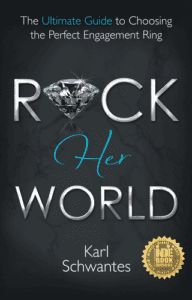
At the end of the day, which store you choose is entirely up to you. As long as it is an informed choice, you can always look back without regrets. Take the time, do your research, have a look at the Google reviews and find the jeweller that’s right for you. If you would like more help in how to choose the perfect diamond and engagement ring, you can find out everything you ever needed to know from the international award winning book – Rock Her World “The ultimate guide to choosing the perfect engagement ring”
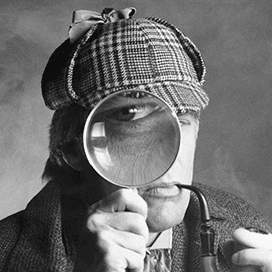 Confused by the diamond certificate?
Confused by the diamond certificate?Have you ever looked at a diamond certificate and had no idea what all the numbers and percentages mean? Don’t worry, you are not alone. Starting out can be a bit daunting, not only do you have to find the ring that she likes but you need to make sure the rock you are putting your hard earned cash into is going to be worth it. The first thing that you are probably familiar with, if you have been paying attention to her subtle hints or done even just a little research is this thing called the 4C’s. They are Cut, Colour, Clarity and Cut Grade. The big question is which one is the most important? You can see my short video series here.
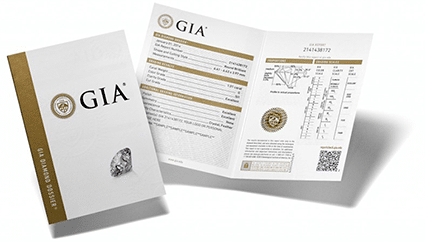
Is only talking about how well the diamond is cut – which ultimately means how much it is going to sparkle. It is that twinkle that her friends will see from across the room. Tip – Aim for an Excellent cut grade. Diamonds like a Passion8 diamond sit in the top 1% for diamond cut and will outsparkle normal excellent cut grade diamonds.
Is only talking about how white the diamond is. This is talking about the body colour of the stone and has nothing to do with the colour. The colour grade starts at D and goes down to Z. Tip – Aim for the top 3 colour grades – D, E, F. Any colour that is G in colour or lower will pull a lot of yellow.
Is only talking about the natural inclusions you can see with a 10x magnifying lens. Tip – Aim for eye Clean SI clarity. As everyone’s eyesight is different make sure you look at the diamond with a lens before purchasing it. Looking at the plot on the diamond certificate will not tell you how good or bad the inclusion is.
Is only talking about the physical size that you see. While this might seem like the most important to some ladies, it isn’t if it is coming at the expense of quality. Smaller more perfectly cut diamonds will actually have the same diameter as larger average cut diamond. Tip – Always go for a diamond that is slightly smaller of better quality. After all, do you want a diamond that looks better or one that weighs more? So now that we have that sorted, let’s look at what all the percentages mean. I wish it was as simple as looking at an excellent cut grade. The truth is the goal posts have widened significantly in the last 5 years. Today more and more diamonds are falling into the excellent category than ever before. 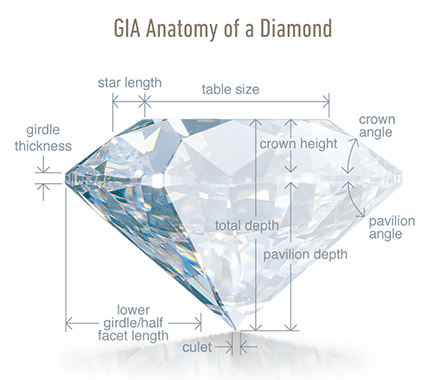
Billionaire investor Warren Buffett famously stated that “diversification is protection against ignorance.” At the moment it seems pretty hard to make money in most of the usual asset classes. Many of the most historically reliable investment vehicles, such as shares or property have failed to deliver spectacular results in the last few years. But you don’t have to be a billionaire like Warren Buffett to start investing in pink diamonds. The Pink diamonds have been increasing by 20%-30% every year for the last 5 years, which is a return that many fund managers would envy. What we have found is that the price of the investment pink diamonds has at least doubled over the last 5 years. Every year I go to buy pink diamonds I am always amazed at how much they have increased. Of course, it would be remiss of me if I did not mention that this is not legal or financial advice and you should seek your own advisor that can determine if this strategy is right for you. Clients today are looking to acquire Pink diamonds not just in their personal names, but in other investment vehicles such as a Self-Managed Super Fund (SMSF). Whatever your reason, whether it is diversifying your portfolio, saving for your own retirement or looking to acquire a family heirloom, The Pink Diamonds can be a solid investment.
There are 5 main reasons contributing to the year over year price increases.
1. In 2013 Argyle Transitioned from an above ground mine to an underground mine. The Argyle mine and processing plant operate 24 hours a day, 365 days of the year. All of these factors contribute to increasing running costs, which have an inflationary pressure on the rough cost of Pink diamonds. Furthermore, with underground mining, there is always the risk of a fatal accident which could see the mine close earlier than expected.
2. The kimberlite pipe where Argyle diamonds are found looks similar to a funnel. As they move further down the pipe, they are finding fewer and fewer diamonds. This leaves less rough to be cut into the desired round brilliant cut diamonds, which are in the highest demand.
3. Similar to the above point, as they find less and less diamonds the number of high quality deep pink diamonds they are finding is getting less and less. This is causing the deep pinks to increase at a faster rate than the mid – light pinks.
4. The demand for pinks is ever increasing. With this stunning Australian product attracting more and more attention, locally and internationally, more clients are seeking them out, not just for investment, but for personal use as well.
5. Projected end date. With the well-documented end date of 2020 predicted by Argyle, there is a finite timeframe in which to acquire them. While no one has a crystal ball, the prediction is that they could increase markedly after this end date, or when the mine is exhausted.
There are 4 main colour grades when it comes to classifying Pink diamonds. Purplish Pink, Straight Pink, Pink Rose and Pink Champagne. The colour scale ranges from 1 -9, with one being the deepest pink diamond and 9 being like a decaf, skinny soy latte (or as I call it a ‘why bother’) Almost all pink diamonds have a primary colour and some have a secondary colour. Sometimes this secondary colour can give a little extra kick to the diamond. In the Purplish Pink scale, the purple hue can make a pink diamond look one shade deeper on the straight pink scale. So a 4PP pink diamond can sometimes look like a 3P. In the case of the Pink rose, it is often a brownish undertone that gives the diamond its stronger colour. A good tip when looking to buy a loose pink diamonds is to turn them upside down in a white sleeve to see the secondary colours.
If you are looking for Investment Pink Diamonds the ideal range that I recommend is to aim for a 4P or 4PP to a 5P or 5PP. This allows for capital appreciation and can still be an affordable entry point, not just for you, but the purchaser you wish to sell the diamond to down the track. While deeper pink diamonds might be rarer and also appreciate in value at a greater rate, the number of potential buyers down the track will be less. Budget permitting, if a portfolio of pink diamonds is something that you would be interested in the minimum amount that I recommend would be $100,000. The aim here is to put together a selection of diamonds that will allow you to sell certain portions of the portfolio at a future point in time if you so wished. That way you can either neutralise the initial investment or greatly reduce it, while still leaving a portion of diamonds to further increase in value.
If you are ready to take the next step in your pink diamond investment journey, please feel free to contact me for complimentary 10 min pink diamond investment call or request our Investment Pink Diamond report. Alternatively, visit us in our Queen St Mall Diamond boutique to see a selection of pink diamonds for yourself. About Karl
Do you have any unworn, old or broken pieces of jewellery lying around, unloved in your jewellery box? Maybe now is the right time to consider remodelling your jewellery?
Many people have inherited jewellery that while sentimental, is no longer their style. Or maybe you have a piece that has become damaged or is no longer wearable. Why not have these pieces transformed into something wonderful that you can and actually want to wear. Remodelling jewellery is a great way to give new life and new meaning to old precious pieces.
Apart from the fact that ‘up styling’ jewellery means you now have beautiful modern pieces that can be worn every day, you may also discover that your pieces are now worth a lot more than you think. Remodelling jewellery can add a lot of value to the piece, provided it has been done by a reputable jeweller. When a piece of jewellery is damaged, it loses any manufacturing value that it might once of had. When it is valued – damaged or unwearable jewellery is only given gold and base stone value.
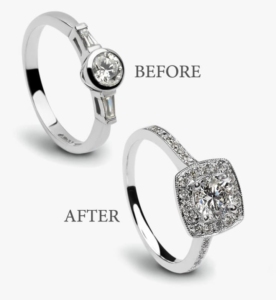
“Jewellery doesn’t belong in a drawer!”
Gather it up and visit us for a complimentary design consultation, and see how we can help you create something amazing from your unworn pieces. In your design consult, we will sit down with you and go through everything that you have and draw a 3D image of your new dream piece. You never know, you could discover thousands of dollars in value lying in your drawer!